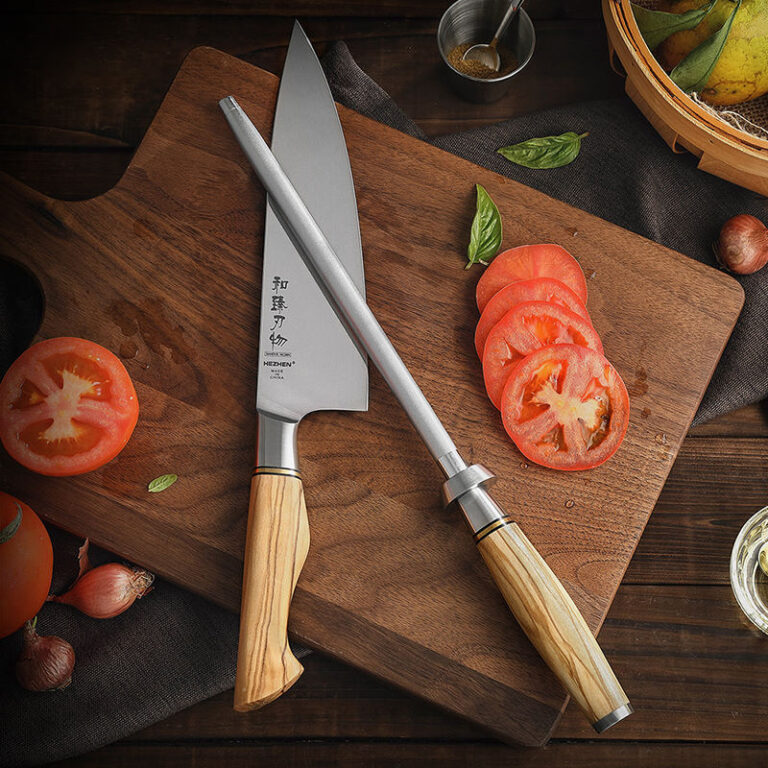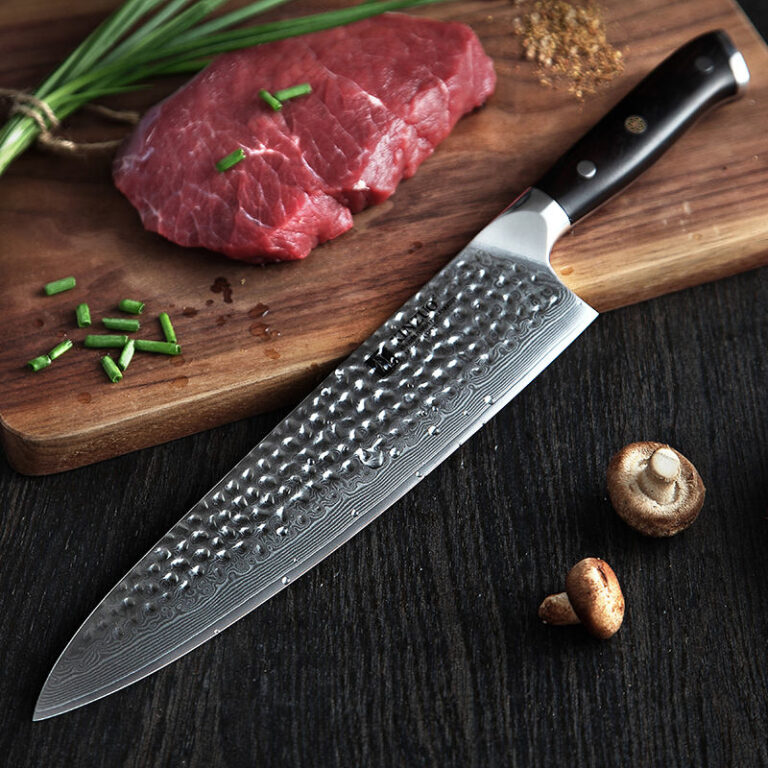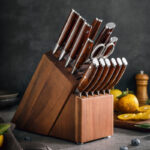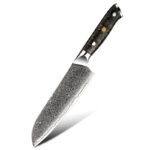How I Sharpen My Damascus Steel Knife
A sharp knife is a safe knife, and keeping my Damascus steel knife razor-sharp is a priority. Damascus steel is known for its strength and edge retention, but it still needs proper sharpening to maintain its precision. Today, I’ll walk you through how I sharpen my Damascus steel knife to keep it performing at its best.
- Choosing the Right Sharpening Tools
To sharpen a Damascus steel knife effectively, I use high-quality sharpening tools to prevent unnecessary wear on the blade. Here are my go-to options:
- Whetstone (Water Stone): My preferred choice, as it provides the most control and precision.
- Honing Rod: For minor touch-ups and maintaining the edge between full sharpenings.
- Strop with Compound: To refine and polish the edge after sharpening.
- Sharpening Guide: Optional, but useful for keeping a consistent angle if you’re new to sharpening.
- Using a Whetstone to Sharpen the Knife
A whetstone is the best way to sharpen a Damascus steel knife without damaging the intricate patterns. Here’s my process:
- Step 1: Soak the Whetstone – I soak my whetstone in water for about 10-15 minutes to ensure proper lubrication.
- Step 2: Find the Right Angle – I hold my knife at an angle of about 15-20 degrees, which is ideal for most Damascus steel knives.
- Step 3: Sharpen One Side – I start with the coarse grit side of the stone (1000 grit), gently gliding the blade along the stone in smooth, controlled strokes. I make sure to sharpen the entire edge evenly.
- Step 4: Flip and Repeat – After working one side, I repeat the process on the other side of the blade.
- Step 5: Use a Finer Grit – I switch to a finer grit (3000-6000) to refine the edge and enhance sharpness.
- Step 6: Strop for a Polished Edge – Finally, I use a leather strop with a polishing compound to remove any burrs and achieve a razor-sharp edge.
- Honing the Knife to Maintain Sharpness
To keep my knife in top shape between sharpening sessions, I use a honing rod regularly. Here’s how I do it:
- I hold the honing rod vertically and place the knife at a 15-degree angle.
- Using gentle pressure, I slide the blade down the rod in a sweeping motion, alternating sides.
- I repeat this about 5-10 times per side to realign the edge.
- Proper Care After Sharpening
Once I’ve sharpened my Damascus steel knife, I make sure to clean and protect it properly:
- I wipe the blade with a damp cloth to remove metal particles and residue.
- I apply a thin layer of food-grade mineral oil to prevent rust and maintain the steel’s integrity.
- I store it in a dry, safe place, ensuring it doesn’t come into contact with other metal objects.
Summary
Keeping a Damascus steel knife sharp requires patience and the right tools. By using a whetstone, honing rod, and strop, I ensure my knife remains razor-sharp while preserving its beautiful patterns. Regular maintenance, including proper storage and oiling, also helps extend its lifespan. If you take care of your knife as I do, you’ll enjoy its superior performance for years to come!





